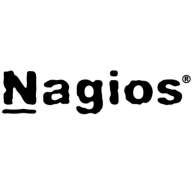

Nagios XI and Goliath Performance Monitor compete in network and performance monitoring. Goliath Performance Monitor appears to have an edge due to its advanced features and diagnostics capabilities.
Features: Nagios XI provides a flexible plugin architecture, facilitating extensive customization and integration across systems. It is also known for its comprehensive monitoring of network elements. Goliath Performance Monitor excels in real-time performance metrics and offers robust application-specific diagnostics to help pinpoint and resolve bottlenecks efficiently. Its advanced features offer superior insights into system performance, enhancing overall monitoring efficacy.
Room for Improvement: Nagios XI could enhance real-time data analysis and improve application-specific diagnostics to match evolving market needs. It may also benefit from features targeting usability. Goliath Performance Monitor might improve the cost-effectiveness of its solutions and bolster options for customization. Simplifying some of its diagnostics features for broader understanding could cater to a wider user base.
Ease of Deployment and Customer Service: Nagios XI's deployment is straightforward, integrating smoothly within existing IT structures with strong customer service support. Goliath Performance Monitor offers a cloud-based model which simplifies and speeds up deployment, reducing IT overhead. Its dedicated customer support ensures seamless operation and addresses issues swiftly, supporting users effectively through the transition.
Pricing and ROI: Nagios XI is appealing due to its competitive pricing, making it suitable for budget-conscious businesses while ensuring solid ROI via its open-source elements. Goliath Performance Monitor, despite a higher initial cost, justifies its expense by significantly reducing the time-to-resolution for performance issues, thereby ensuring an impressive ROI through its advanced diagnostic capabilities.

Nagios XI provides monitoring of all mission-critical infrastructure components, including applications, services, operating systems, network protocols, systems metrics, and network infrastructure. Third-party add-ons provide tools for monitoring virtually all in-house and external applications, services, and systems.
Nagios XI uses a powerful Core 4 monitoring engine that provides users with the highest levels of server monitoring performance. This high degree of performance enables nearly limitless scalability and monitoring powers.
With Nagios XI, stakeholders can check up on their infrastructure status using the role-based web interface. Sophisticated dashboards enable access to monitoring information and third-party data. Administrators can easily set up permissions so users can only access the infrastructure they are authorized to view.
Nagios XI Benefits and Features
Some of the benefits and top features of using Nagios XI include:
Reviews from Real Users
Nagios XI stands out among its competitors for a number of reasons. Several major ones are its integration options and monitoring abilities, as well as its alerting features.
David P., a senior DevOps engineer at EML Payments Ltd, writes, “We use Nagios as a network discovery tool. We use Nagios to maintain our uptime statistics and to monitor our services. It has allowed us to be much more sophisticated in our monitoring and alerting.”
An IT-OSS manager at a comms service provider notes, “Nagios XI has a custom API feature, and we can expose custom APIs for our integration. This is a great feature.”
We monitor all IT Infrastructure Monitoring reviews to prevent fraudulent reviews and keep review quality high. We do not post reviews by company employees or direct competitors. We validate each review for authenticity via cross-reference with LinkedIn, and personal follow-up with the reviewer when necessary.